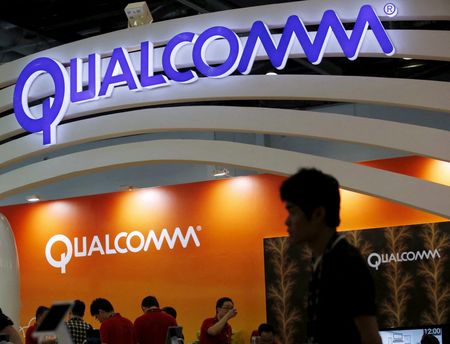
(This Jan 6. story corrects second paragraph to reflect that Ultra Cruise will work for 95% of driving scenarios, not 95% of roads)
By Stephen Nellis
(Reuters) – General Motors on Thursday said a trio of chips from Qualcomm Inc will power the “Ultra Cruise” driver-assistance feature on a luxury Cadillac sedan next year.
The Qualcomm chips will provide the computing power for the all-electric Celestiq, the company’s planned flagship sedan. The automaker says that Ultra Cruise will allow for hands-free driving on both surface streets and freeways to account for up to 95% of driving scenarios in the United States and Canada, going beyond GM’s current Super Cruise feature that only works on highways.
“It’s a supervised system, so you still have to pay attention. But essentially what we’re doing is giving the driver a hands-free experience in a much larger domain,” said Jason Ditman, chief engineer for Ultra Cruise.
At the heart of the system will be a computer about the size of two laptops sandwiched together. GM will provide the software to make the system work, and Qualcomm is providing key chips – two processor chips and then one chip designed to speed up specific functions.
The deal is a milestone for Qualcomm, which dominates chips for mobile phones and has been diversifying its business. While it Qualcomm has numerous deals with automakers to provide chips for infotainment centers and 5G connectivity, but GM is the first automaker to use Qualcomm’s “Snapdragon Ride” chips for self-driving features.
Qualcomm is competing against rivals like Nvidia Corp and Intel Corp’s Mobileye to win deals with automakers for self-driving chips. The energy efficiency of the chips is a key requirement for automakers in electric vehicles, where computers must compete for limited battery life with the drive train.
Qualcomm has aimed to use its history making chips for phones, where battery life is a key selling point, to lure automakers. GM’s Ditman would not disclose how much power the Ultra Cruise computer uses, but the device is air-cooled, meaning the chips likely consume less power and generate less heat than rival offerings that need liquid cooling.
“We’re very conscious of what our power consumption is,” Ditman said.
(Reporting by Stephen Nellis in San Francisco; Editing by Nick Zieminski)

